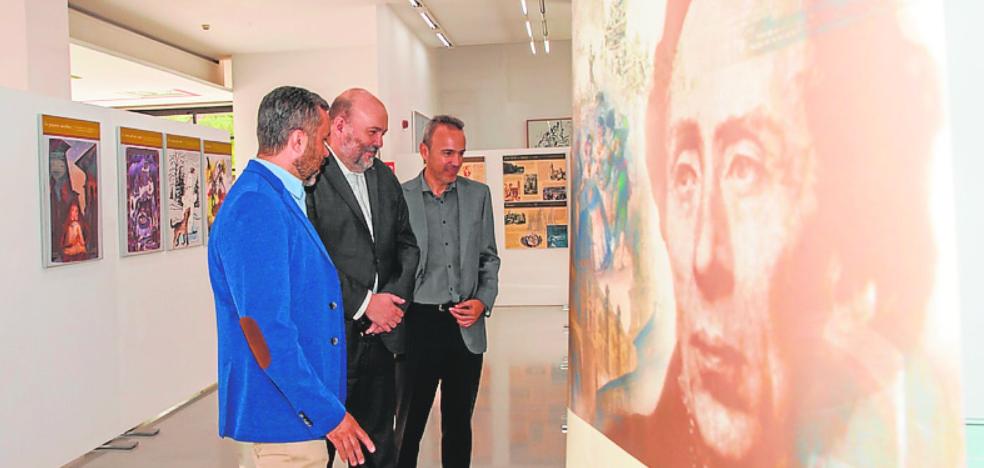It will open in the summer of 2023 with a collection of 650 pieces from the nearly 160,000 National Heritage. It contains works by Tiziano, Velázquez, Caravaggio or Goya
It was conceived 25 years ago as the Royal Collections Museum and was set to open in 2015. But the official name will be the Royal Collections Gallery and it won’t open until summer 2023. Located in the formidable granite building designed by the architects Emilio Tuñón and the late Luis Moreno Mansilla, next to Almudena Cathedral and the Royal Palace of Madrid, it will house in twenty rooms an exhibition featuring 650 pieces of the nearly 160,000 exhibited by the National Heritage property.
This was confirmed yesterday by the Minister of the Presidency, Félix Bolaños, together with the President of National Heritage, Ana de la Cueva, after an extraordinary meeting of the board of directors of the institution to conclude yet another roadmap of the public gallery , which has suffered from ups and downs and delays and that it will open “at no extra cost”.
It will house works by Velázquez, Caravaggio, Titian, Goya and countless masters, as well as sculptures, floats, armor, photographs, clocks, engravings or musical instruments spread over 9,000 of the 40,000 square meters, spread over the seven floors of the unique 14-storey building. international architecture awards. It aims to be the “dynamizer” of a new cultural and tourist axis of Madrid, which goes from the Temple of Debob to the new gallery and which includes the Palacio de Oriente and its gardens, the Teatro Real and the cloisters of the Descalzas Reales .
The term museum – “the name was provisional”, said Bolaños – has been replaced by that of gallery, “easy to translate into English and more appropriate and attractive”. “It’s the best name and because of the theater it will eventually be called ‘The Gallery’, like ‘the Prado’, ‘de Thyssen’ or ‘the Real’,” said the minister. He believes that the gallery is “more in keeping with the architecture of the building”, -with inner aisles almost 120 meters long and 16 meters wide – and without losing the descriptive ‘Royal Collections,’ which underlie a brand known for 25 years and that determines the content of the exhibition Bolaños recalled that the project began to take shape in 1982, taking the idea from the Museum of Carriages and Tapestries that Manuel Azaña, President of the Second Republic, had planned in 1936.
“Intensive work has gone into compensating for the paralysis caused by the pandemic. The schedule is perfectly defined and the gallery will open in the summer of 2023, coinciding with the start of the Spanish Presidency of the EU,” emphasized Bolaños. “It will be a unique museum in Europe, it will be opened at a time of great importance for our country and it will serve to add synergies and enhance its international appearance,” he said.
Ana de la Cueva assured that the center, which has suffered several delays, management changes and revisions to the museum plan, will be the “big showcase” of the National Heritage and give the institution “the opportunity to appreciate the quality and diversity of the royal collections, of everyone’s heritage, he emphasized that the warehouses are in operation and that there are already large pieces resting in some rooms.
The trustees claim to have the museum meeting “very sophisticated”, which they did not show yesterday, and which will contain the 650 pieces dating from the fifteenth and twenty-first centuries. The exhibition discourse will be “in permanent transformation” and a third of the pieces will rotate continuously. “It will show the royal patronage of the Habsburgs and Bourbons in a chronological tour,” added De la Cueva, who hopes that “everyone who visits the Royal Palace” will visit the gallery, which has one and a half million visitors a year.
With three exhibition floors, the building is visited from top to bottom. Access from Plaza de la Almudena leads to the first room on floor -1, which begins with the Catholic Monarchs. The tapestry collections and the royal armory enter into dialogue with works by El Bosco, Tiziano, El Greco, Ribera, Velázquez or Caravaggio. The Royal Monasteries, “as spaces for women and for power and patronage”, will also play a leading role.
On floor -2 you can see the plans of the adjacent Royal Palace, commissioned by Felipe V after the burning of the Alcázar de los Austrias and the Tuñón and Mansilla model of the building. Musical instruments, furniture and decorative arts will co-exist with Mengs, Goya, Tiépolo, Paret and Maella. It includes the photo and explains how the state took over the preservation of the royal collections and opening the royal sites to the public through the National Heritage, an institution established in the Second Republic.
Floor -3 -accessible from the gardens of Campo del Moro- is from the 21st century. It contains an immersive cube in which images of architectural and natural spaces of the royal sites are projected in 360 degrees. The temporary exhibition hall will be located on this floor.
Source: La Verdad
I’m Wayne Wickman, a professional journalist and author for Today Times Live. My specialty is covering global news and current events, offering readers a unique perspective on the world’s most pressing issues. I’m passionate about storytelling and helping people stay informed on the goings-on of our planet.



